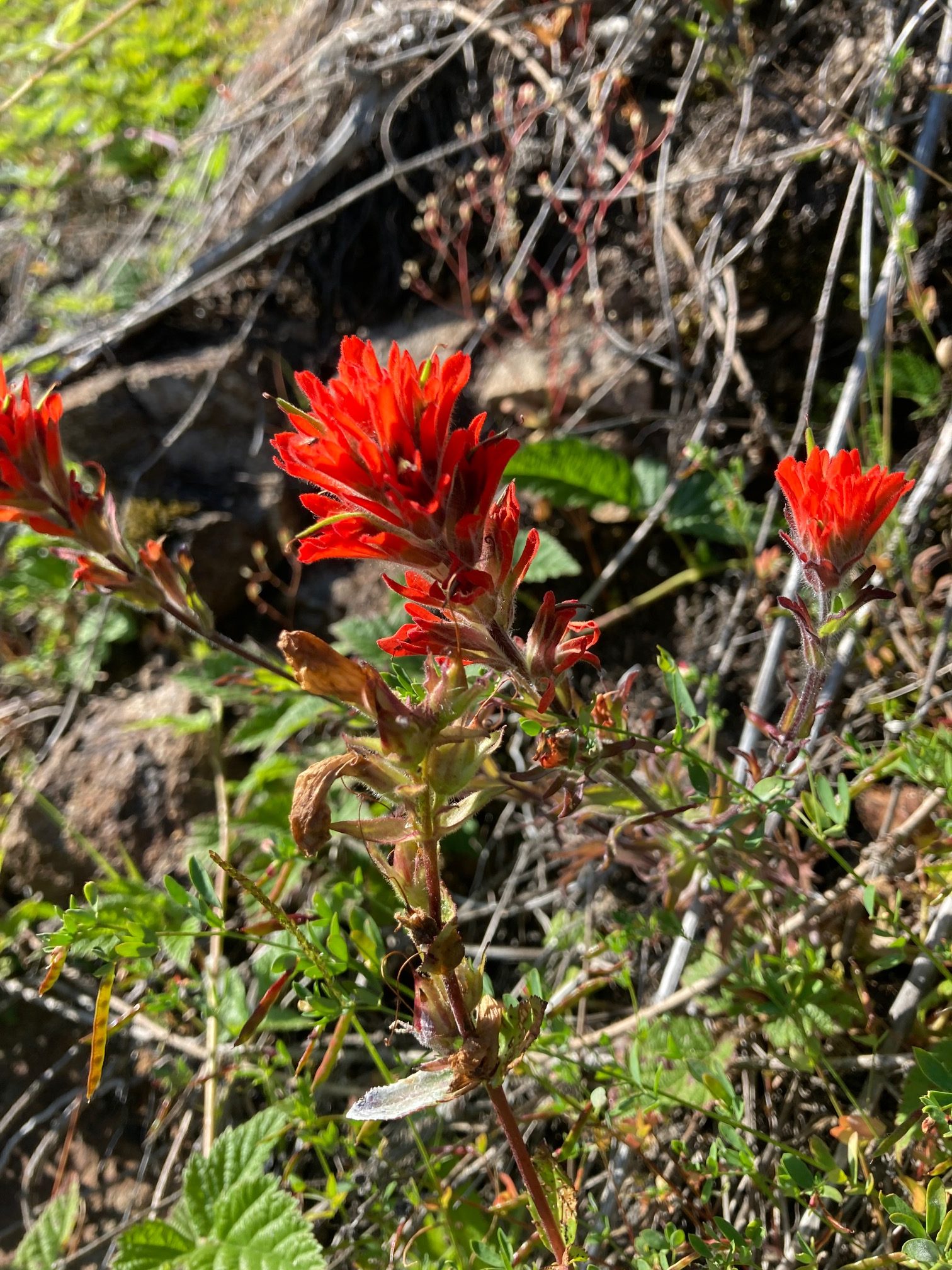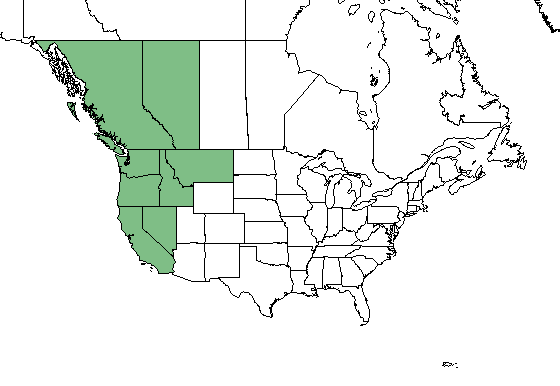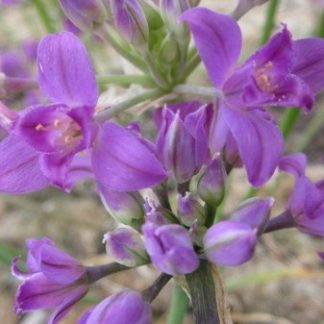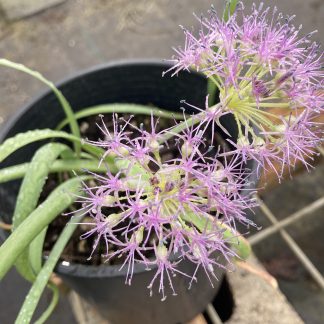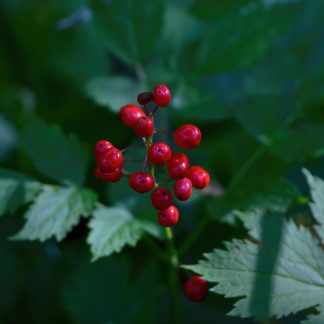Castilleja hispida
Indian paintbrush
Habit: one of the most attractive castillejas, this species has a scarlet inflorescence and is distinctively bristly. The plant grows from a woody base, sending up multiple erect stems up to 2 feet tall. The foliage is broadly lance-shaped and textured with veins and whitish stiff hairs. The upper leaves as well as the bracts of the inflorescence are divided into 3-5 pinnate lobes. Corolla and tips of bracts are bright red, or sometimes yellow, and bloom from mid spring to late summer. Bracts and calyxes have pointed lobes. Seeds are very small and develop in capsules.
Ecology: it grows in meadows, dry open forests, grassy slopes and coastal bluffs, from lowlands to sub-alpine zones. Castilleja hispida is usually found in dry micro-climates, ranging from southern British Columbia and Alberta, and south to northern California and Nevada.
Growing conditions: indian paintbrush enjoys full sun to partial shade, and well-drained soils. Castillejas are semi-parasitic plants, making associations with the roots of other species. It should be planted near grasses, asters and other plants that will serve as hosts.
This is an extremely variable species, plants with different amounts of hair, size and shape of leaves have been reported and classified into a number of varieties and subspecies. Castilleja h. ssp. acuta and Castilleja h. ssp. hispida are recognized subspecies.
Specs
Evergreen Perennial
8-24 inches (20-61 cm)
6-15 inches (15-38 cm)
3b to 9b

